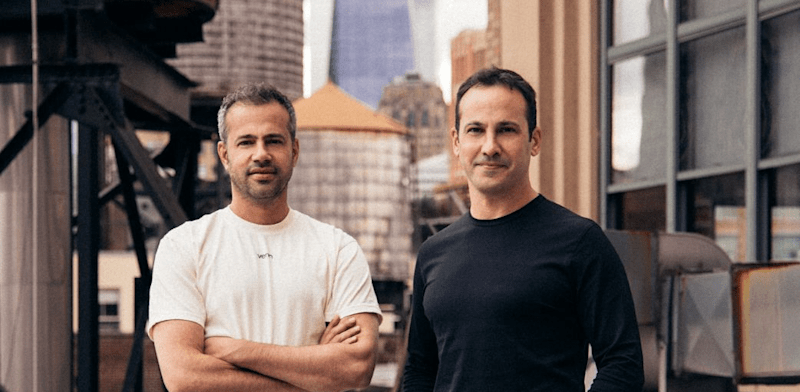In This Article
Worried that artificial intelligence (AI) will replace lower- and middle-income jobs, and only create wealth for business owners?
Billionaire Ray Dalio argues that AI is making the bottom 60% of Americans more dependent on the top 1% to keep the economy afloat. He notes that 60% of Americans can’t even read at a sixth-grade level—how could they hope to compete in our increasingly knowledge-based economy?
Early warning signs only fuel these fears. A worrying report by J.P. Morgan notes the high unemployment rate among recent college graduates and weak job growth in many white-collar careers that AI can replicate.
What about real estate? How AI-resilient is income from real estate, both active and passive?
AI-Resilient Real Estate Business Models
There are dozens of niches in real estate investing, most under no threat of replacement by AI.
Flipping houses
No software can flip a house from start to finish. Think of the steps involved:
Marketing to connect with off-market distressed sellers
Person-to-person sales to convince the owner to sell at a bargain price
Assessing repairs and estimating costs and profits
Financing arrangements
Filing permits
Interviewing, hiring, and managing contractors, and overseeing repairs
Working with human inspectors to sign off on repairs and approve permit completions
Listing, staging, and marketing the property for sale
Negotiating terms with buyers
House flippers know there’s more to it than that, like coordinating with bank inspectors to release escrowed draws, and a dozen other mini-steps.
Flipping houses is a business, whether you do it full-time or part-time. While AI tools might help streamline individual tasks in that business, it can’t run the entire thing.
Rental investing
Some rental investors effectively flip houses to themselves, refinancing them and keeping them as rentals (the BRRRR strategy). It takes just as many steps as outlined above.
But even investors who buy turnkey rentals have to go through plenty of steps that AI can’t do for them, from financing to inspections to use and occupancy permits.
Again, AI tools might help here and there, but rental investing is a side hustle business. Anyone who tells you it’s completely passive is selling something.
Wholesaling
Sure, wholesaling real estate involves fewer steps. But it still requires human-to-human sales and negotiation.
Aside from evaluating the property and its repair costs, you need to convince the owner to sell at a discounted price. And you need to build a network of buyers who know, like, and trust you.
It’s a fundamentally human business model, and AI tools can only take you so far.
Flipping land
You can automate more of the marketing and sales for flipping land. Unlike flipping houses, this is more of a paper business, where you don’t actually visit most land parcels, and there’s no physical renovation or construction.
Even so, it’s a business—and AI can’t run an entire business. Leverage AI to automate as much of the business as possible, while you simply make the final decisions and handle negotiations.
You might also like
AI-Proof Passive Investments
Not everyone wants to replace their active income by starting a real estate business. Some people (like me) just want to invest passively and earn strong returns.
Private partnerships
Passive investors can simply partner with real estate operators.
For example, our co-investing club partnered with a house flipper last year. We funded a series of flips in exchange for a cut of the profits. Likewise, we’ve partnered with a spec home developer to build a handful of single-family homes.
We simply invested as silent partners in these real estate businesses’ deals.
Real estate syndications
Our co-investing club also invests passively in syndications, where we effectively become a partial owner in a large real estate project.
The same principle applies: They’re running a real estate investment business, buying apartment complexes, industrial properties, or mobile home parks, and we’re simply investing passively in individual properties.
Because we invest together, we can each put in less money, $5K apiece instead of the typical $50K to $100K required.
Real estate funds
Last month, our club invested in a land flipping fund. The operator flips about 50 land parcels each year, with an average hold time of around 4.5 months. He can’t use bank loans for these raw land flips, so he raises money privately from people like us—and pays a consistent 16% return in the form of quarterly distributions.
Private notes
Alternatively, you can lend money privately through a secured note at a fixed interest rate.
We’ve lent money before on secured notes paying 10% to 16%, secured with a lien against real property. Again, the borrowers run real estate investing businesses that can’t be replaced by a chatbot, and we’re simply funding the properties.
Intrinsic Protections
Real estate is, well, real. It’s physical, existing in the real world. To build, renovate, show, sell, or lease requires flesh-and-blood people.
Then there’s demand. Real estate has intrinsic value: People need physical places to live, eat, and produce things. To some extent, they also want places to shop and work in person, too.
That doesn’t mean AI can’t or won’t be a useful tool for people working in the real estate industry. But AI can’t run an entire business, swing hammers, or walk prospects through a property and pitch them on it convincingly.
Real estate will always require humans, and that will increasingly make it an AI-resilient refuge for entrepreneurs and investors.
If you believe AI is a net threat to employees and a net gain for entrepreneurs and investors, become one of the latter. And there’s no more AI-resilient industry to do so than real estate.























